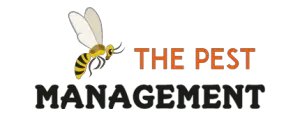Why are there conflicting opinions on whether or not termites eat bamboo?
Since termites eat wood and bamboo isn’t wood, then it must be left off a termite’s diet, right?
In this article, we’ll discuss the topic, “Do Termites Eat Bamboo?”
Do Termites Eat Bamboo?
Yes! Sure, bamboo isn’t wood, but it is packed with cellulose microfibrils. It is the cellulose that termites are after and not wood itself.
If you don’t believe that termites eat bamboo, that’s because the bamboo you are referring to has been treated with borate.
It’s as simple as clear coating the bamboo or bamboo laminate with borate to prevent termites from entering and feasting on the bountiful amounts of cellulose packed within.
Drywood termites love to eat bamboo. The brittle or hard outer shells of bamboo can be difficult to penetrate, but the copious fibers of cellulose will keep a termite determined to get inside.

Do Termites Go in Bamboo?
It is usually difficult for termites to go into bamboo, but that doesn’t mean it isn’t possible. If bamboo is making contact with the ground, it’s even easier for a termite to penetrate the inside of this substance that is rich in cellulose which termites live on.
The bamboo culm is what Drywood termites love to eat. There are ways to prevent termites from entering bamboo such as:
- Use termite resistant concrete at the base of the structure that bonds bamboo with the ground.
- Apply steel or masonry foundation to create barriers instead of letting bamboo simply stand on the floor.
- Treat bamboo with borate. Apply a thin, clear coat of borate on all bamboo surfaces.
How Do You Make Bamboo Termite Proof?
You can look to buy bamboo that has already been treated to prevent termites from infesting inside it. Borate is the most popular treatment as it is a derivative of boric acid: a popular pest killer.
Borate kills the bacteria known as protozoa which allows termite to digest cellulose. With borates or boric acid, the damage is done from the inside out.
Termites will not be able to digest bamboo or any treated wood with borate. They will either dry out, dehydrate or die of starvation.

Which Wood Is Best for Termite Resistant?
Some people think that switching to bamboo is better than wood because it is resistant to termites. This is not true. Termite can eat plenty of cellulose found in bamboo.
There are other types of wood that termites hate because they act as repellents. Some of them as listed below:
- redwood
- cedar
- teak
- cypress
- walnut
- mahogany
These types of wood are either hard to chew or digest. Some of them repel termites from the odor they give off which is unappealing to them.
What is Eating My Bamboo?
If you see your bamboo being chewed, gnawed or holes through it, then you might wish to blame termites right away. There are probably no panda bears nearby, so what else could be causing this?
Here is a list of insects that could be eating your bamboo structures:
- bamboo aphids
- scales
- mealybugs
- mites
- beetles
- termites
Bamboo leaves are attractive to bamboo aphids. The cellulose found inside bamboo stems are appealing and nourishing for termites.
Why Are Insects Attracted to Bamboo?
Bamboo is one of nature’s most durable and versatile plants. It’s edible and able to use as a source of building material, clothing, paper and plenty of other examples.
The starch and carbohydrates in bamboo are rich sources of nutrients. Insects can feast off bamboo and degrade it.
Termites are capable or absorbing the cellulose fibers in bamboo with their gut bacteria to nourish themselves. If you have any bamboo material for your property, make sure they are properly treated.
How Do You Treat Bamboo Furniture for Termites?
The best treatment for bamboo furniture, flooring and walls is to apply a clear coat of borate. It’s a derivative of boric acid that will disallow a termite digesting the cellulose inside the bamboo.
Solignum Colorless is an example of a wood preservative that also prevents termites while keeping your wood or bamboo from degrading.
What is the White Stuff on Bamboo?
Are you seeing white fuzz or patches of white on your bamboo? These fuzzy patches usually come from mealybugs. They are most likely the egg cases of mealybugs.
If the white patches look like web patterns, it could actually be spider mites. Neither of which are a good sign. This means that your bamboo was untreated. Apply a layer of borate or other wood preservative treatment with a brush or spray solution to prevent white patches on your bamboo.

How To Stop Termites From Eating Bamboo
Start from the beginning when shopping for bamboo material. Check to see if they have already been treated. Borates are applied on bamboo to kill the protozoa gut bacteria in termites.
They will be rendered useless and incapable of eating wood or bamboo when borates are present.
Termites are able to detect borates and will look to avoid it. Borates can be mixed with glycol and applied deeper into the bamboo or wood.
Conclusion
The next time an argument begins about termites not being able to eat bamboo, it’s best to state why this is possible. Bamboo could be washed in saltwater and treated with borate or other preservatives to prevent termites from going near it.
Many species of termites would rather look elsewhere for wood that is easier to penetrate. The hard shell of bamboo makes it difficult for termites to eat bamboo, but it is not impossible.
The bamboo is rich with cellulose that termites thrive on. Prevent them from eating bamboo by treating it first with borates.
Thanks for visiting ThePestManagement.com for the best information to help you to make the pest control process easy, safe & affordable.
